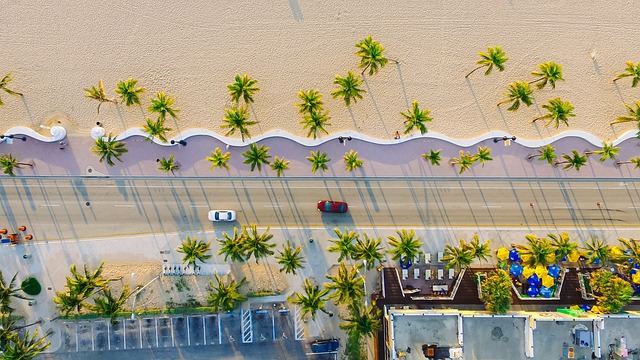Coastal Masterpieces: Exploring Art and Design in Seaside Architecture
There’s something inherently captivating about the idea of a seaside view—a canvas painted by nature, where the sky meets the water in a breathtaking display of color and light. As we explore the architectural marvels that dot the coastlines, it’s clear that these structures do more than merely house their occupants; they serve as artistic expressions that reflect their environments while enhancing the beauty around them.
The Intersection of Nature and Architecture
In seaside architecture, the design process often begins with a deep appreciation for the surrounding landscape. The art of creating a structure that harmonizes with its natural setting is both a challenge and a triumph. Architecturally, the designs tend to favor open spaces and large windows, which invite natural light and showcase the stunning seaside views. The use of materials such as timber, glass, and stone connects the built environment seamlessly with the coastal scenery, establishing a dialogue between the architecture and the ocean.
Artistic Inspirations from the Sea
When you think about art in seaside architecture, it extends beyond the form of the buildings themselves. Many architects draw inspiration from the very essence of the coast—its colors, textures, and rhythms. The soft blue of the ocean, the sandy hues of the beach, and the dynamic waves that ebb and flow create a palette that can influence everything from the exterior finishes to the interior décor. This artistic influence is evident in Coastal Modernism, which emphasizes clean lines and organic shapes, creating a calming atmosphere that echoes the serenity of the nearby shore.
Designing for Sustainability
Another layer of art and design in seaside architecture involves a commitment to sustainability. Given the unique challenges posed by coastal environments, such as erosion and climate change, many architects are integrating sustainable practices into their designs. From using environmentally friendly materials to creating structures that can withstand harsh weather, the goal is to create lasting masterpieces that respect and preserve the natural beauty of the seaside view.
Interactive Spaces and Coastal Living
Seaside architecture often promotes a lifestyle that encourages outdoor interaction with the environment. Balconies, decks, and patios are designed to enhance the experience of coastal leisure, bringing the beauty of the seaside view into everyday life. These spaces allow for gatherings, family dinners, or quiet moments of reflection while soaking in the sounds and sights of the ocean—transforming ordinary living into an artistic celebration of nature.
Art Installations and Community Engagement
In many coastal towns, architecture goes hand in hand with public art installations that enrich the community and enhance the seaside experience. Sculptures along the beach, murals on seaside buildings, and even eco-art that highlights the local ecosystem can elevate seaside architecture into a broader cultural dialogue. These artistic additions not only beautify the environment but also foster a sense of community and connection among residents and visitors alike.
In conclusion, seaside architecture is not just about buildings; it’s about creating a symbiotic relationship with the stunning landscape. By understanding the interplay between art and design, architects craft exquisite masterpieces that reflect the beauty of the seaside view, inviting us all to experience the magic of coastal living.




